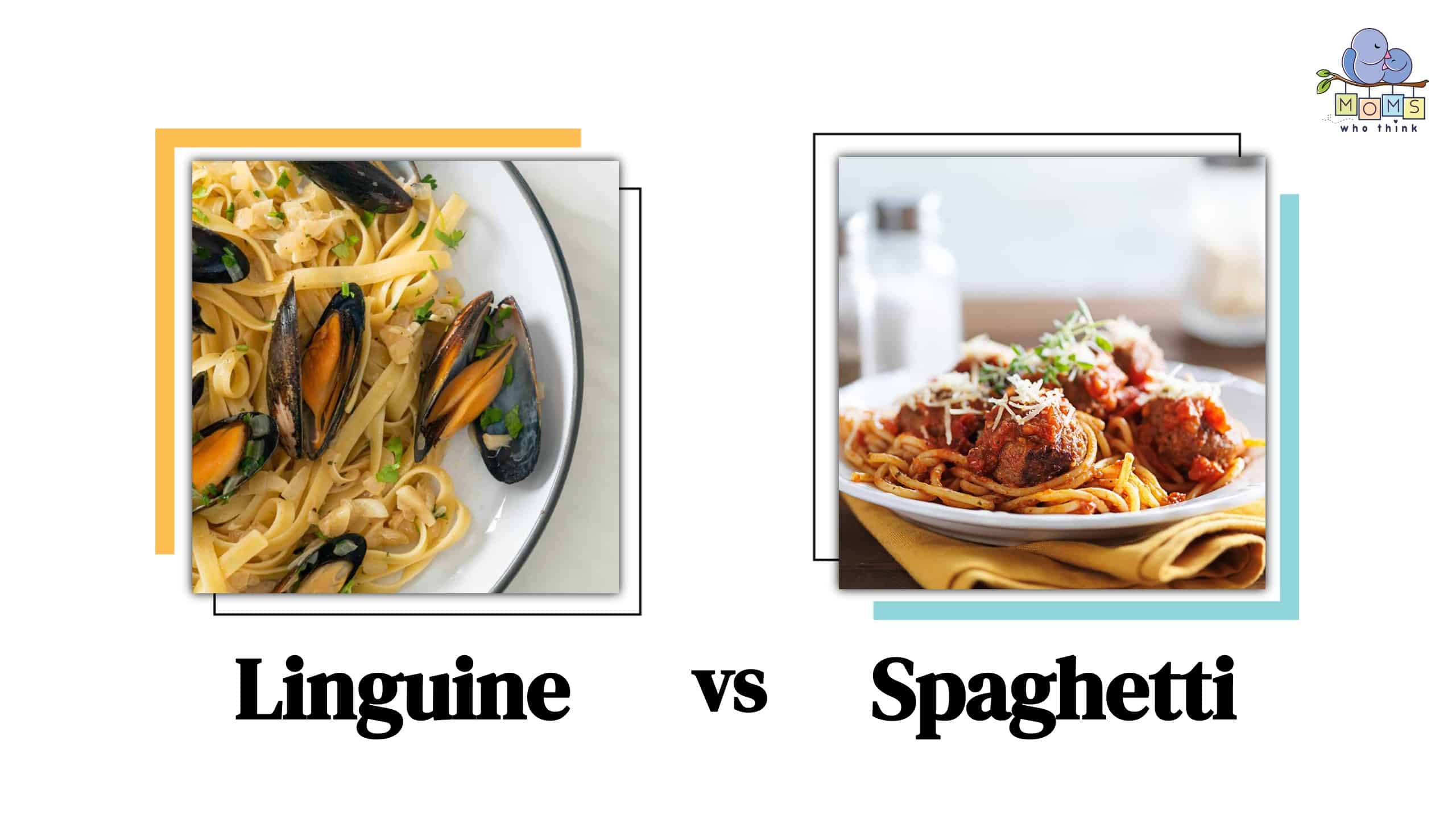Linguine is a long, thin, flat pasta noodle that is shaped like a ribbon. It is similar to spaghetti but is slightly wider and flatter. It can be paired with a variety of sauces, such as pesto, marinara, or alfredo.
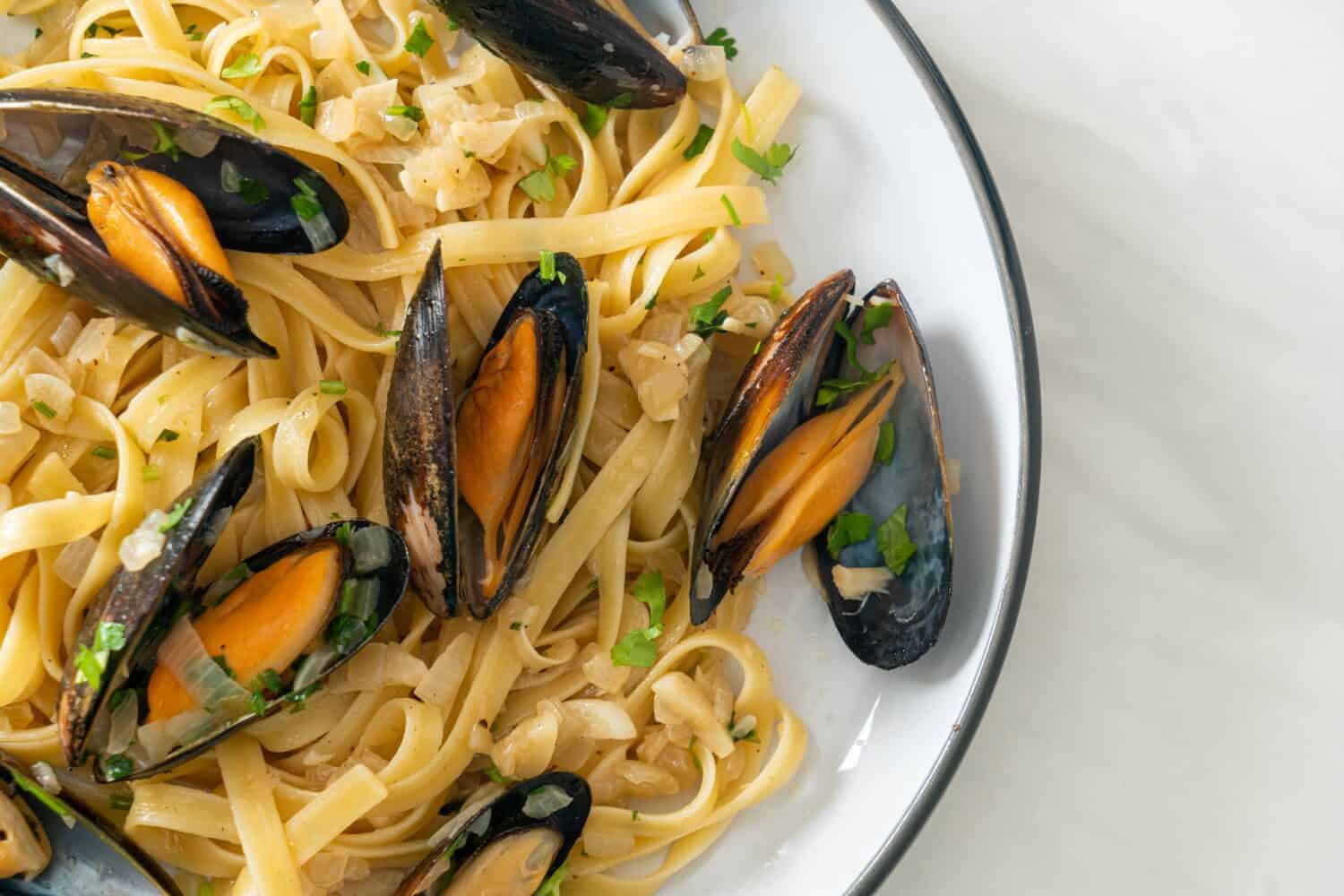
©gowithstock/Shutterstock.com
Linguine vs. Spaghetti: What is the Difference?
When it comes to pasta, there are various types to choose from. Two of the most popular and commonly used are linguine and spaghetti. While both are long, thin noodles, they have distinct differences in shape, texture, and taste. Linguine is a flat noodle that is wider than spaghetti and has a slightly chewy texture, making it perfect for pairing with heavier sauces.
Spaghetti, on the other hand, is a round noodle that is thinner and smoother in texture, making it ideal for lighter and oil-based sauces. Both linguine and spaghetti are made from the same ingredients: flour, salt, and water, and perfect for twirling around your fork. In this article, we will explore the unique characteristics of linguine vs. spaghetti, including their history, cooking techniques, health benefits, and cultural significance.
The Origin of Linguine and Spaghetti
Italian pasta was made from hard wheat and shaped into long strands. Linguine originated in the 17th century Liguria region, North West Italy, its capital is Genoa. Its name comes from the Italian word for “little tongues,” which describes its flat, narrow shape. It's traditionally served with seafood or pesto sauce.
Spaghetti originated in southern Italy in the late 19th century. Its name comes from the Italian word for “little strings,” which describes its long, thin shape. It's traditionally served with tomato sauce also known as marinara sauce and meatballs.
Today, pasta is made from a variety of grains, from durum wheat to buckwheat to rice, and comes in a wide range of shapes and sizes.
Both linguine and spaghetti have become incredibly popular in the United States and other parts of the world, and are now considered staples in many households.
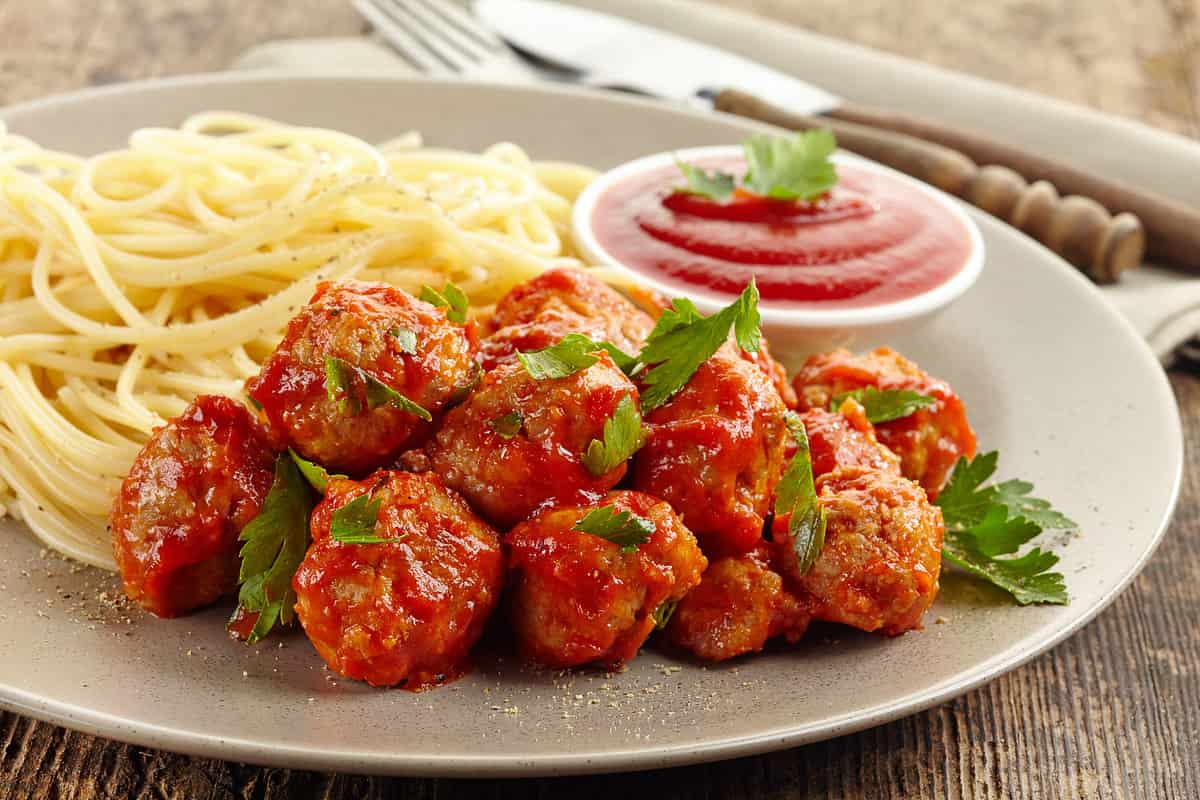
©iStock.com/Magone
Differences in Shape and Texture
Linguine is a flat, narrow pasta shape that's slightly wider than spaghetti and has a lightly chewy texture. It's typically about 3mm wide, and around 10 inches long and has a slightly more delicate texture than spaghetti. Spaghetti, on the other hand, is a long, thin strand of pasta that's round in shape. It's about 2mm wide, and approximately 12 inches in length.
The 5 Best Sauces to Pair with Linguine
- White sauce (Béchamel sauce)
- Marinara sauce
- Pesto sauce
- Alfredo sauce
- Carbonara sauce
The 5 Best Sauces to Pair with Spaghetti
- Bolognese sauce
- Truffle cream pasta sauce
- Brown butter sauce
- Vodka sauce
- Clam sauce
Recommended Ingredients To Use With Linguine and Spaghetti
Linguine and spaghetti work well with a variety of ingredients, including shrimp, clams, chicken, and vegetables like asparagus and mushrooms. Fresh herbs such as basil and parsley also add a delicious flavor to these pasta dishes.
Cooking Tips
Cooking linguine and spaghetti is simple; all you need to do is boil a pot of water and add a pinch of salt. However, there are certain tips that can help you cook them to perfection. First, make sure to use a large pot of water, at least 4-6 quarts, to avoid the pasta from sticking together. Boil the pasta for 8-10 minutes or until it is al dente, which means it should be cooked but still slightly firm in the center.
How to Serve Linguine and Spaghetti
Linguine and spaghetti are versatile pasta shapes that can be served in various ways. They are commonly served with tomato-based sauces like marinara or arrabbiata. However, they can also be paired with cream-based sauces or tossed with olive oil, garlic, and herbs. Serve them hot topped with grated cheese we recommend parmesan and freshly chopped herbs for added flavor.
Storing Linguine and Spaghetti
To store linguine and spaghetti, place them in an airtight container or a sealable plastic bag and store them in the fridge for up to 3 days or in the freezer for up to 8 months.
Nutritional Comparison of Linguine vs. Spaghetti
Linguine and spaghetti are made from the same ingredients, wheat flour, and water. Thus, they have similar nutritional values. Let’s take a look at the chart below.
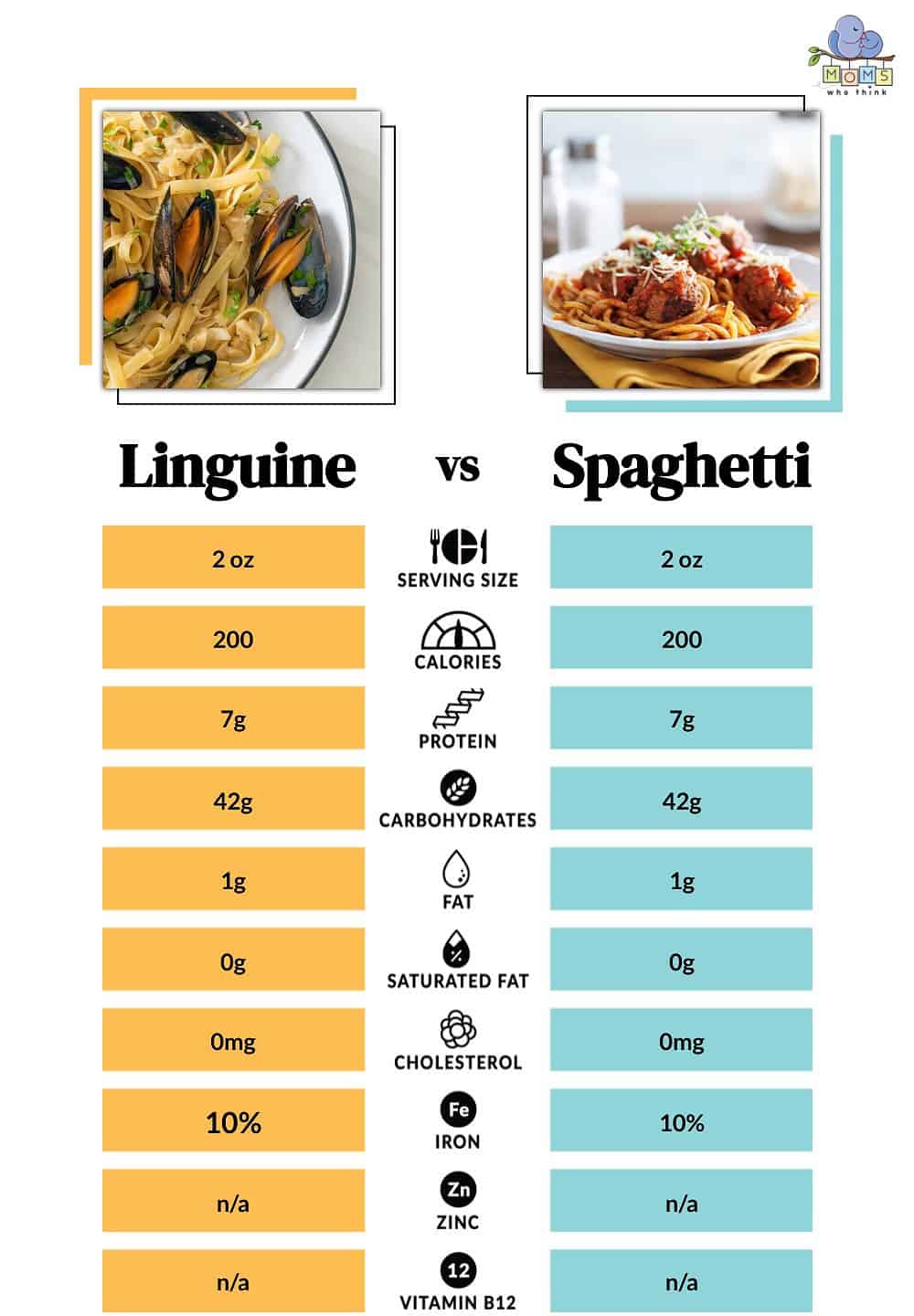
©
The healthiness of linguine and spaghetti depends on the ingredients used in the sauce. Tomato-based sauces are a healthier option as they are low in calories and rich in vitamins and minerals. On the other hand, cream-based sauces are high in calories and fat content. Adding vegetables like spinach, broccoli, or mushrooms to the pasta can also increase its nutritional value.
Popular References to Linguine and Spaghetti
Linguine and spaghetti have made their appearance in popular movies and TV shows. One of the most famous references is from the animated film Lady and the Tramp (1955), where the two dogs share a plate of spaghetti in a romantic setting. In the movie Goodfellas (1990), the main character Henry Hill played by Ray Liotta describes his favorite meal as linguine with clam sauce.
Conclusion and Final Thoughts
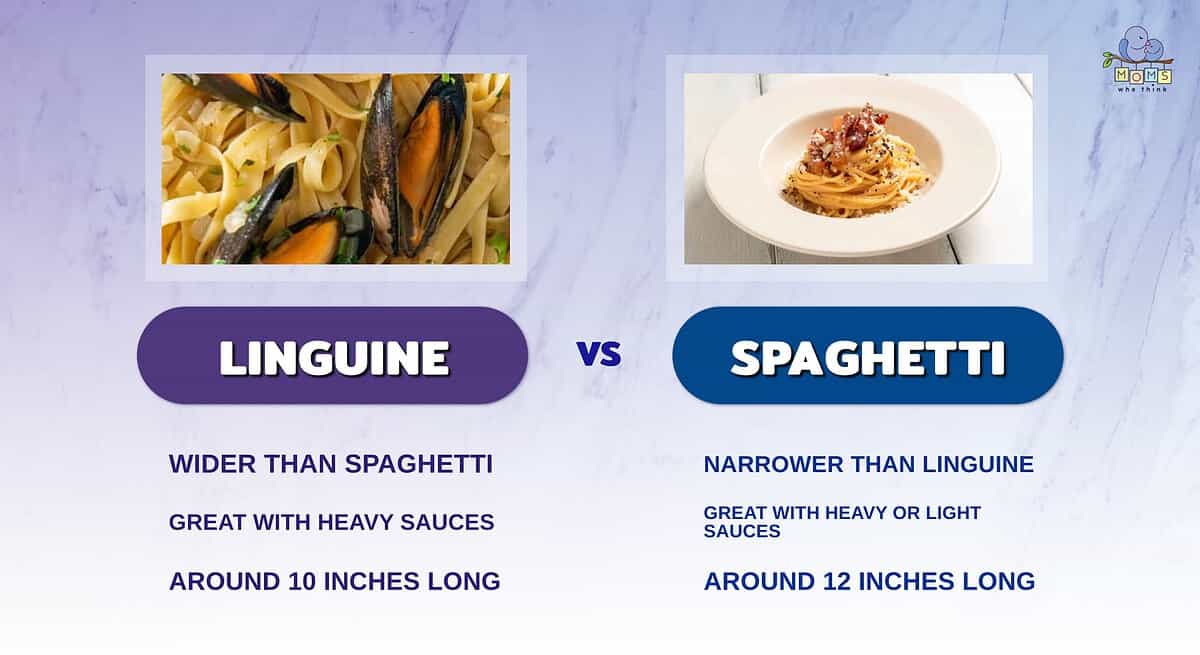
- Linguine is wider than spaghetti; this is an easy way to tell these two noodles apart.
- Because of its width, linguine is great with heavy sauces. Spaghetti, meanwhile, is great with heavy or light sauces.
- Another way to tell linguine and spaghetti apart is by their length. Linguine is a bit shorter than spaghetti, at ten inches versus twelve.
Linguine and spaghetti are two popular pasta shapes that share many similarities. Linguine is wider and flatter than spaghetti and has a slightly chewy texture. Spaghetti is a long and thin pasta with a smooth texture. Despite the differences, they can be used interchangeably and paired with various sauces and ingredients. Whether you prefer linguine or spaghetti, they are both worthy of a spot in your pantry and on your plate. Understanding their differences lets you choose the best noodle for your recipe and enjoy a satisfying and delicious pasta dish.
Linguine and Spaghetti Recipes
Print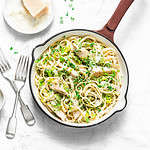
Light Linguine Carbonara
- Yield: Serves 4
Ingredients
8 ounces uncooked linguine
1 egg, lightly beaten
1 cup fat-free evaporated milk
¼ cup finely chopped sweet red pepper
⅛ teaspoon crushed red pepper flakes
⅛ teaspoon pepper
½ cup grated Parmesan cheese, divided
½ cup frozen peas, thawed
2 bacon strips, cooked and crumbled
Instructions
1. Cook linguine according to package directions.
2. Meanwhile, in a small saucepan, combine the next 5 ingredients. Cook and stir over medium-low heat until mixture reaches 160°F and coats the back of a metal spoon.
3. Stir in ¼ cup Parmesan cheese, peas, and bacon; heat through.
4. Drain linguine; toss with sauce. Sprinkle with remaining Parmesan cheese. Serve with breadsticks and side salad.
Nutrition
- Serving Size: 1 cup
- Calories: 352
- Sodium: 349mg
- Fat: 7g
- Saturated Fat: 3g
- Carbohydrates: 52g
- Fiber: 3g
- Protein: 20g
- Cholesterol: 66mg
